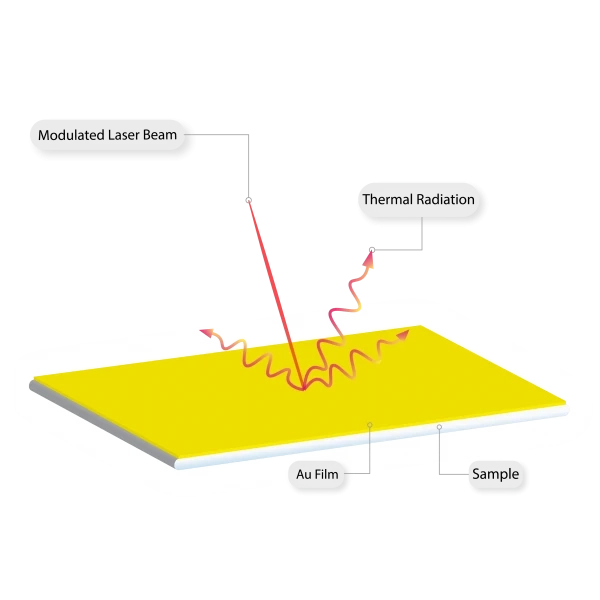Thermal analysis is a crucial technique used in materials science and engineering to study how materials respond to temperature changes. By analyzing the thermal properties of materials, scientists and engineers gain valuable insights into their behavior and can make informed decisions in various industries such as manufacturing, pharmaceuticals, and electronics. In this article, we will explore the importance of thermal analysis in understanding material behavior.
Why is thermal analysis Important for grasping material behavior?
The analysis technique plays a significant role in understanding material behavior due to the following reasons:
Characterizing Material PropertiesIt helps in characterizing material properties such as melting point, glass transition temperature, thermal conductivity, and specific heat capacity. These properties provide valuable information about how materials respond to temperature changes and their suitability for specific applications.
Predicting Material PerformanceBy conducting it, engineers can predict how materials will perform under different temperature conditions. This knowledge is crucial in designing materials that can withstand extreme temperatures without degradation, ensuring the reliability and safety of various products and components.
Assessing Material StabilityThe analysis techniques like differential scanning calorimetry (DSC) and thermogravimetric analysis (TGA) enable the assessment of material stability. They help identify phase transitions, decomposition, oxidation, and other chemical reactions that can occur at different temperature ranges, providing insights into material behavior over time.
Quality Control and Failure AnalysisIt is widely used in quality control and failure analysis processes. By analyzing the thermal behavior of materials, manufacturers can ensure the consistency and reliability of their products. Additionally, it aids in investigating material failures, identifying the root causes, and implementing corrective measures.
Optimizing Material SelectionIt assists in optimizing material selection for specific applications. By understanding the thermal properties of different materials, engineers can choose the most suitable materials that can withstand the desired temperature ranges, ensuring optimal performance and longevity.
What are the types of thermal analysis techniques?
There are several techniques that are utilized to study material behavior, including:
Differential Scanning Calorimetry (DSC)DSC measures the heat flow into or out of a sample as a function of temperature. It helps determine phase transitions, reaction enthalpies, specific heat capacities, and thermal stability.
Thermogravimetric Analysis (TGA)TGA calculates a sample's change in mass as a function of temperature. It is used to analyze decomposition, oxidation, and volatilization processes, as well as determine the thermal stability of materials.
Dynamic Mechanical Analysis (DMA)DMA evaluates how the materials’ mechanical properties change with temperature and time. It helps understand the viscoelastic behavior, glass transition temperature, and modulus of elasticity.
Thermal Mechanical Analysis (TMA)TMA measures the dimensional changes of materials as a function of temperature. It aids in determining coefficients of thermal expansion, softening temperatures, and the stability of materials under different thermal conditions.
What are the factors that affect thermal analysis results?
Several factors can influence the results, including:
Sample PreparationProper sample preparation, such as sample size, shape, and purity, is essential for accurate results. Inadequate sample preparation can lead to measurement errors and inaccurate interpretations.
Heating RateThe rate at which the temperature is increased during the analysis affects the observed thermal transitions. Different heating rates can result in variations in peak temperatures and enthalpy values.
AtmosphereThe choice of atmosphere during the analysis can impact the behavior of materials. For example, conducting the analysis in an inert gas environment can prevent oxidation or decomposition reactions.
Instrument CalibrationRegular calibration of the analysis instruments is crucial for obtaining accurate and reliable results. Instrument calibration ensures proper temperature measurement and correct baseline subtraction.
What are the advantages of thermal analysis in material testing?
There are several advantages to material testing, including:
Non-Destructive AnalysisIt is a non-destructive technique, allowing materials to be analyzed without altering their integrity. This enables multiple measurements on the same sample and reduces material waste.
Quick and Precise ResultsIt provides rapid and precise results, allowing researchers and engineers to obtain critical information about material behavior in a short amount of time. This aids in efficient decision-making and problem-solving.
Versatile and Widely ApplicableThe analysis techniques can be applied to a broad range of materials, such as polymers, metals, ceramics, and composites. Their versatility makes them valuable tools in various industries.
Complementary to Other Analysis TechniquesIt complements other material characterization techniques, such as spectroscopy and microscopy. Integrating it with other methods enhances the understanding of material properties and behavior.
What are the best practices for conducting thermal analysis?
To obtain reliable and accurate results in the analysis technique, the following best practices should be followed:
Proper Sample PreparationEnsure the sample is representative, homogeneous, and properly prepared according to the specific technique requirements. Use suitable sample holders or pans for containment.
Calibration and Baseline CorrectionRegularly calibrate the analysis instrument using appropriate standards. Perform baseline correction to eliminate any instrumental artifacts and obtain clean thermograms.
Controlled AtmosphereChoose the appropriate atmosphere (inert gas, air, etc.) based on the material and analysis requirements. Maintain a controlled environment to minimize external influences.
Optimal Heating RateSelect an appropriate heating rate that allows for clear thermal transitions without causing thermal lag or excessively fast reactions.
Data Analysis and InterpretationThoroughly analyze and interpret the obtained data, considering the specific material characteristics, known thermal behavior, and relevant literature.
Conclusion
Thermal analysis services play a crucial role in understanding material behavior. By characterizing thermal properties and studying thermal transitions, scientists and engineers gain valuable insights into material stability, performance, and suitability for various applications. The analysis techniques provide quick and precise results, aiding in material testing, quality control, and optimization. Despite certain challenges, following best practices ensures accurate and reliable analysis outcomes.


